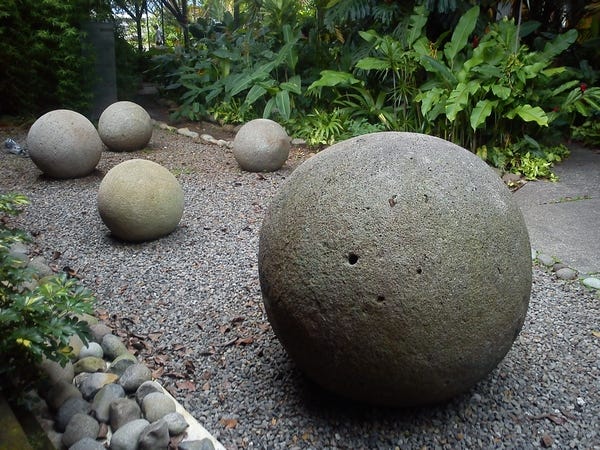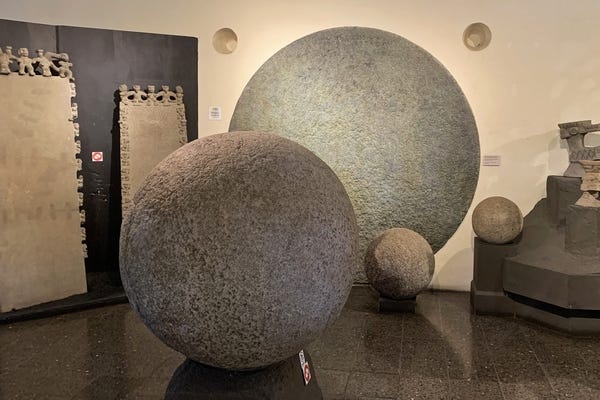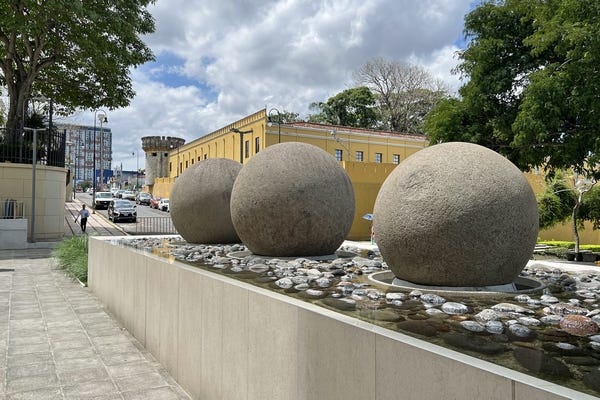Cocoon, the Diquís Spheres, and Pomodoro’s Spheres
The weight of outside, the pull of inside. #sculpture #videogame
Welcome back to Artcade, the newsletter with no sharp corners. And not just because of all the spheres in the title. I rounded the corners of the sentences and polished the commas until they looked like marbles. If you’re reading on your phone, hold it tight: if it slips, who knows how far it might roll. Leave rulers and set squares at home and grab a compass. Now you’re ready. Enjoy the read!
[As you know, once a month Artcade has a paywalled episode. And this is that episode! If you want to read the whole thing, you can use the free trial (if you don’t see it, try clicking the title and reading directly in your browser) or you can support Artcade with a subscription. If you do, thank you!]
I learned while writing this episode that there’s a word, “petrosphere.” I have rarely found such a gulf between the elegance of a word and the banality of its meaning. As you can imagine, petrosphere means “stone ball.” Luckily, the Diquís spheres of Costa Rica are anything but banal. There are more than three hundred of them, in different sizes and weights: from the small ones to those that reach fifteen tons. The dating is murky: the widest range goes from 300 CE to 1500 CE, and because many were moved from their original sites it’s hard to be more precise. There are even carbon-14 assessments that place them millennia earlier. The scientific community is blunt about this. If you ask “When were the Diquís spheres carved?” the unanimous answer is: “Who knows.”
Do we at least know why they were carved? Not really, because the Diquís culture that produced them went extinct due to a severe illness called the “Spanish invasion.” So we proceed by hypothesis, ready? The spheres could represent the solar system or be inspired by the position of the stars. They might have had ceremonial functions or communicated rank and social status. Here too the answer is unanimous: “We don’t know.” The most recent hypothesis elevates the spheres to an artistic product symbolizing the center of the world.
Whatever they were at the time, today the Diquís spheres are UNESCO heritage and contain a world we may never know. If you think that’s a sorry fate, know that the first spheres to be found had it worse: many were blown up in the hope that there was treasure inside. Legends about buried gold have always done well in that part of the world.
Keep reading with a 7-day free trial
Subscribe to Artcade to keep reading this post and get 7 days of free access to the full post archives.




